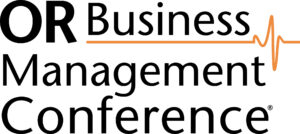Session: How to make the case for a robotic services line
Editor's Note
Robotic surgery can improve patient outcomes, reduce costs, and improve efficiencies and turnover time, but only if it’s done right. In a conference session yesterday, Michelle Toder, MD offered insights, best practices, and lessons learned during two decades of experience in pioneering robotic applications in weight loss and other bariatric surgeries.
Toder is clinical lead, computer assisted surgery program at Northern Light Eastern Maine Medical Center. After bringing in the first robots two decades ago, the OR was “a mess,” she says cluttered with a “mindboggling” amount of equipment supporting the robot. Today, it’s a “clean, neat setup,” and there are no more worries about robotic surgery slowing throughput. Concerns about differences in quality and increased costs also haven’t panned out. In fact, the medical center has experienced the opposite. Reasons for this include:
- A strong commitment to a robotic services line. As Toder put it, “You can’t buy a treadmill and think you’re going to qualify for Olympic trials in the marathon.” One early step was creating a steering committee for the robotic services line, which she says was successful thanks to vertical alignment of the C-suite, administration and the clinicians. The commitment to robotics was an extension of these stakeholders’ shard commitment to reducing open surgery.
- A facilitating culture. Involving all stakeholders was critical, Toder said. For example, the steering committee consisted of “service champions” from different specialties, each of whom brought challenges and problems to the table to address. Additionally, pushing robotic services provided a way for the medical center to differentiate itself not just in terms of capability, but also recruitment and retention of the right kinds of surgeons—those keen to be at the forefront of their field.
- Flexible financing. Toder credits the AMP system from Intuitive Surgical, maker of the Da Vinci robot system, for minimizing expenses and mitigating risk. This flexible, usage-based arrangement requires no significant initial cash outlay, with a pay-per-use fee to align costs with revenue-generating activities. Among other benefits, there are no penalties for not achieving mutually agreed upon targets, and built-in upgrades guard against technology obsolescence. “If they launch a new platform tomorrow, they’ll swap the old for the new so you’re not left with 10 million dollars’ worth of antiquated or unsupported technology,” she said.
The results speak for themselves. Overall, the medical center has performed more than 11,000 procedures since 2004. At 95%, 75%, and 94%, respectively, adoption in bariatrics, hernia and foregut exceeds national averages. Robotic hernia adoption climbed from 23% in 2018 to nearly 80% in 2022.
Additional revenue is another benefit, with outpatient robotic inguinal hernia payments roughly $4,000 higher than open. That figure climbs to $5,000 higher for outpatient robotic ventral hernia procedures. The center is also outperforming national averages for community hospitals in OR time, throughput, conversions, and readmission rates.
Read More >>

 Free Daily News
Free Daily News